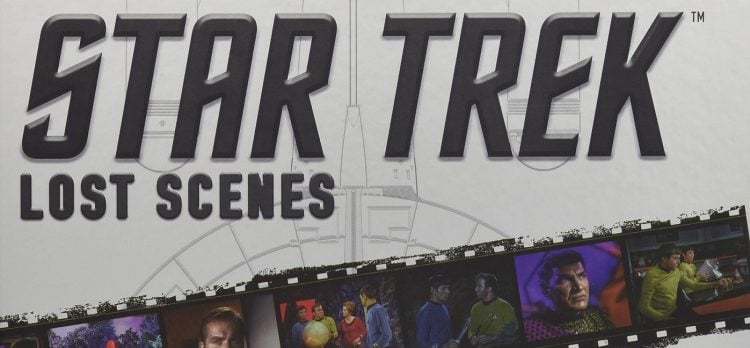
If you’re a ‘Star Trek’ fan, you know the franchise has a rich history of reference books, going all the way back to Stephen E. Whitfield’s 1968 classic, ‘The Making of Star Trek’. The latest entry in that canon is ‘Star Trek: Lost Scenes‘, which uses film clippings from the original series to both reconstruct deleted scenes and offer a unique look behind the scenes of the seminal sci-fi series. In my review, I described it as a remarkable piece of work and a worthy addition to any fan’s bookshelf, so do yourself a favor and check it out.
Since running that review, I’ve had the great pleasure of speaking with the authors of ‘Lost Scenes’, David Tilotta and Curt McAloney. And it was quite a chat! During the first part of the conversation, we discussed their history with ‘Star Trek’, the development of the book, the process by which the material was assembled, and more!
Why don’t we start at the beginning? What’s your history with ‘Star Trek’? Did you grow up with the show or discover it later on?
David Tilotta: So I didn’t catch ‘Star Trek’ until the third season. I’m not that old, but I’m old enough. It was on my parents’ black and white television set. When I happened to watch it one evening, I was just totally blown away with it. That strange looking spaceship that flew across the sky, those people in the strange costumes… And I was immediately hooked. I had always been interested in science fiction, I had done a lot of reading up until then, and when I saw it on TV like that, basically very realistic, it really hooked me. And I never looked back. I have been a ‘Star Trek’ fan ever since.
Curt McAloney: For me, let’s see, I was in sixth grade when that came out and like Dave I saw it on my parents’ black and white TV. But I actually didn’t see it until – like Dave – the third season, because ‘Mudd’s Women’ came on. That’s when I first became aware of ‘Star Trek’, but I wanted to go out and play with my friends and I said, “Mom, can you watch this for me and tell me what it’s all about when I get back?” And she thought it was pretty risque and said, “This wouldn’t be a show you would be interested in. Stick with ‘Lost in Space’.” And okay, I didn’t know better. And then in ’69, in ninth grade there was some kind of open house at my school. And they had just introduced monitors into the classroom. And so I was bored and I started clicking them around and I saw… I think it was a scene from ‘Elaan of Troyius’. I saw the Klingon battle cruiser fighting with the Enterprise and I went, “This is pretty interesting. What’s this all about?” And that was pretty much how I got into it.
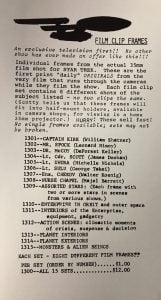 So what was it that lead you to focus on the film clips? Were you collecting them at the time?
So what was it that lead you to focus on the film clips? Were you collecting them at the time?
CM: Yeah. A couple years later I got some kind of mass mailing catalog from Lincoln Enterprises [Gene Roddenberry’s mail order merchandising company], and it said, “‘Star Trek’ film clips!” And you could also order the little emblem badges and a couple other things like scripts and all that. But I was really intrigued with the film clips. Part of the reason was because I was thinking about getting into a career in motion picture work. And so these film clips, you’d get different categories and sometimes they’d have things in there that were like, “What is this?” Like a picture of Apollo against a bluescreen. “What’s this bluescreen?” So those were odd and unusual, and then of course as time went on, after collecting a bunch of them I put them away. Then the internet came along, and I decided to make a ‘Star Trek’ site – StarTrekHistory.com – and started posting them. And then Dave, who had been collecting a lot of them [laughs] saw my site, and he wanted to do some restoration work like I had done. So I gave him some pointers and we started a conversation, and we ended up knocking around the idea of sharing this stuff and how in the world we could get published?” And then I had email correspondence with Mike Okuda and Paula Block. She was putting a book out called ‘The 365 Star Trek Book’, and she wanted people – fans and such – to donate rare pictures that she could include in the book. So Michael knew her and said, “You gotta contact this person from StarTrekHistory.com, because he’s got some really interesting clips on his site.” And so she contacted me via email and then I contacted Dave and said, “This is so cool! We could get our stuff in a book!” Which is what happened. And she was kind enough to get us a contact at CBS that deals with publishing and promotion and stuff like that, and he said “Well, you need to contact these people in England at Titan Books.” And that was… How many years ago was that? About three or four?
DT: A long time ago, yeah.
CM: So that’s basically how we got it published. We had initially wanted to do it for the fiftieth anniversary, but the people at CBS said that they had so much on their plate for that that they’d have to push us down a bit. That’s why it came out when it came out.
So the book was largely an extension of what you’d been doing with your site, then?
CM: Partly, yeah, but with a lot of new stuff. We had some things on there that were duplicated efforts on the site, but most of the stuff is original.
DT: Yeah, we wanted to put together a hard copy book. I mean, I think both of us probably grew up looking at some of the classic books. You know, like ‘The Making of Star Trek’ and Allan Asherman’s ‘Compendium’, and speaking for myself those really influenced me a lot. Growing up loving ‘Star Trek’, learning about ‘Star Trek’, and we wanted to really do something like that to emulate what those people had done.
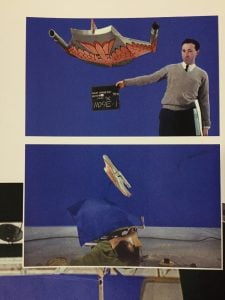 Can you provide some background on the clips for our readers who might be less familiar with this part of ‘Star Trek’ history?
Can you provide some background on the clips for our readers who might be less familiar with this part of ‘Star Trek’ history?
CM: Roddenberry had taken a bunch of the reels that were made for the workprints. They didn’t have sound on them, and basically they were made for the editors to slice and dice, whatever they wanted to do with them to make the picture work and so forth. A lot of the stuff is from takes that weren’t used, and of course as we mentioned in the book a lot of the footage was at the tail end of the reel, so they just let it roll and you get a lot of interesting extraneous stuff from that as well.
DT: Pretty much anything and everything that went before the cameras wound up in the workprints and the dailies, and all that stuff was put into storage while the series was under development. At various points it was acquired by Lincoln Enterprises and sliced and diced, if you will – a lot of it was sliced and diced, not all of it – but a lot of it was cut up and sold to fans via Lincoln Enterprises, as Curt said. And yeah, I’ve been collecting those since I was a young kid.
CM: And as the years went by people were selling their collections.
DT: Yeah, very true. We’ve been collecting stuff off eBay and from friends, all kind of places.
So the clips in the book were all drawn from your own collections and what you were able to gather from the community?
CM: Yep.
DT: Yeah. Probably… ninety percent of it is from our collections. Curt might have a better number.
CM: No, that sounds about right. Maybe fifteen percent came from outside sources, from people contributing. Ten to fifteen, something like that.
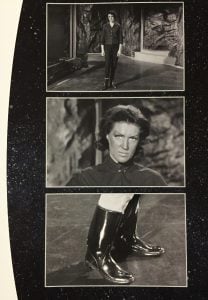 Can you give us a sense of the process of putting all this material together? You said it took about four or five years, I imagine it must’ve been a tall order to contextualize all of the clips, figuring out exactly what you had, and so on.
Can you give us a sense of the process of putting all this material together? You said it took about four or five years, I imagine it must’ve been a tall order to contextualize all of the clips, figuring out exactly what you had, and so on.
CM: Whittling it down from this gigantic tome that would have given you a hernia if it had been produced as a book! [laughs]
DT: I think our first go at this must’ve been six hundred pages or something like that?
CM: Six or seven hundred pages, yeah. (Note: The finished book comes out to two hundred and seventy pages.) And that was like… There’s no way that they could make a profit on that! So we had to whittle down and cut a lot of stuff. So we basically came to the idea that we wanted to show behind the scenes – because we had a lot of clips that showed that. And then of course we had scenes that were obviously not shown in the series, and we had scripts that we could align these scenes up to. And the scripts were the shooting scripts, which had scenes in there that were not produced in the show. And then we also had a whole collection of bloopers. And that was kind of interesting, how to show those when we didn’t really have a context as to what it was they were laughing at. So we had to explain a bit of that with the pictures.
DT: If I can add to that, Curt and I, I think, are basically educators at heart. We try to explain things and teach people things, so that was the approach we took with the book, by and large. And when we presented the behind the scenes information, we broke it up in a way in which we could put the pictures together and tell stories, and explain how some of these special effects were done, explain some things about the makeup. And when we did the deleted scenes we went through and tried to put them in context as to where these occurred and maybe a little bit about the significance. I mean there’s a lot of conjecture, of course, because we really don’t have the records – they don’t really exist anymore – to know why some of these scenes were cut. And then as Curt said about the bloopers, we had to take some educated guesses to figure out maybe what they were laughing at, what the problems were. But we tried to keep the notion of educating people in the back of our minds as we were putting it together.
 And when you were narrowing it down from the six hundred-odd page version, how did you decide what stayed and what went?
And when you were narrowing it down from the six hundred-odd page version, how did you decide what stayed and what went?
CM: Well, we wanted to get a cut scene from every episode. So we basically went, “Here’s our choices. ” We have several different scenes from some of the episodes. So we had all these different scenes and it was like, “Okay, what’s the minimum, the shortest scenes we have, or the scenes we can use to keep it within the page count?” So we had that, we thought about, “Oh, this would look good. This one is too short.” You know, back and forth. So finally we got it down to something that we thought was really usable that everyone would enjoy. But there’s a lot of stuff that had us going, “Oh, I wish we could show this!” But that’s the way it goes.
DT: Yeah, we wanted to make sure that we included at least one picture from every episode. And we did. So if you look for them, you’ll find every single episode there. And as Curt said, it was tough to winnow things down. We went through the behind the scenes material and once we started talking about matte paintings and decided we wanted to show some of the matte paintings, we realized we’d probably need to show examples from most of them. And once we started doing that, we thought, “Gosh, now we need to show how you use a matte painting, how they were developed – painted in other words – and how they were photographed and integrated with the footage.” And so sometimes we went down all kinds of different roads and paths because we wanted to tell complete stories. And then the cut scenes was probably the most difficult for us to select from, because there’s multiple deleted scenes from every episode, and it was tricky to come up with ones that we thought were really interesting. We wanted to come up with a mix of new ones, that people had never seen before. We felt we needed to include some that were classic, that people would expect to see. So we didn’t want to disappoint them. It was challenging. And as Curt said, a lot of the deleted scenes that we wanted to include, we didn’t have room for. So unfortunately they wound up on the cutting room floor again.
CM: Our cutting room floor! [laughs]
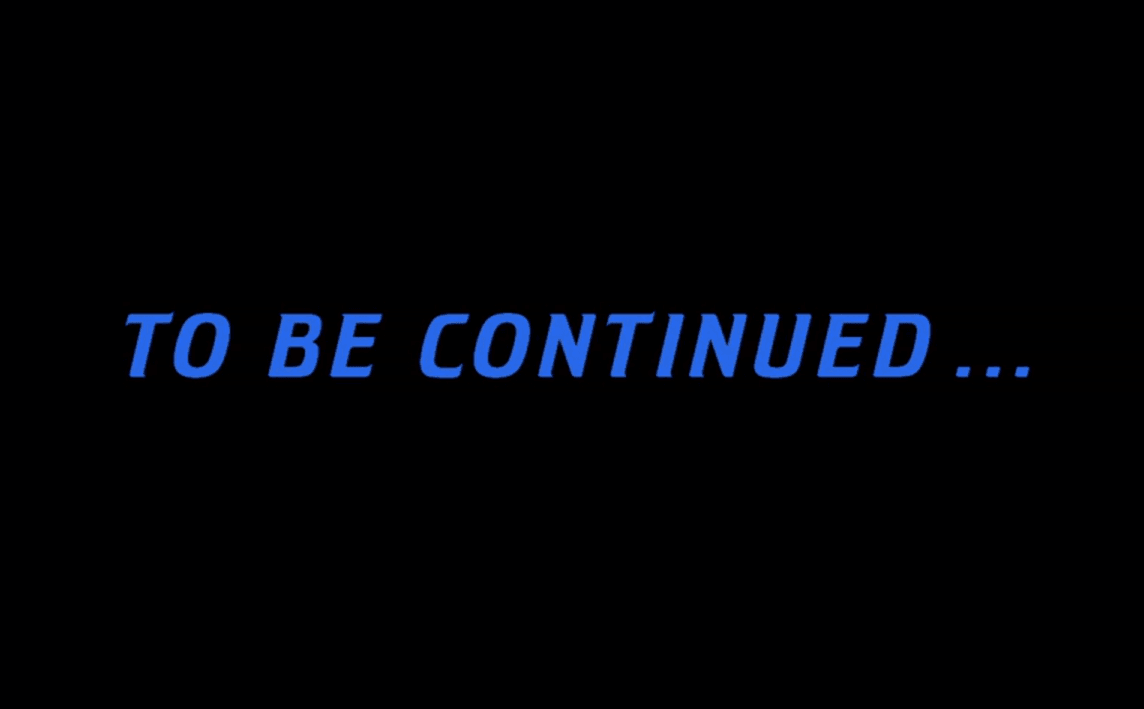
Thanks to Curt and David for their time, and of course for all the work that went into the book. We’ll be back soon for the second (and final, I promise!) part of the interview. ‘Star Trek: Lost Scenes’ can be found on Amazon or anywhere books are sold.
And as always, be sure to check in with ScienceFiction.com for the latest on upcoming ‘Star Trek’ film and television projects – including the second season of ‘Star Trek: Discovery’ – as it becomes available!
